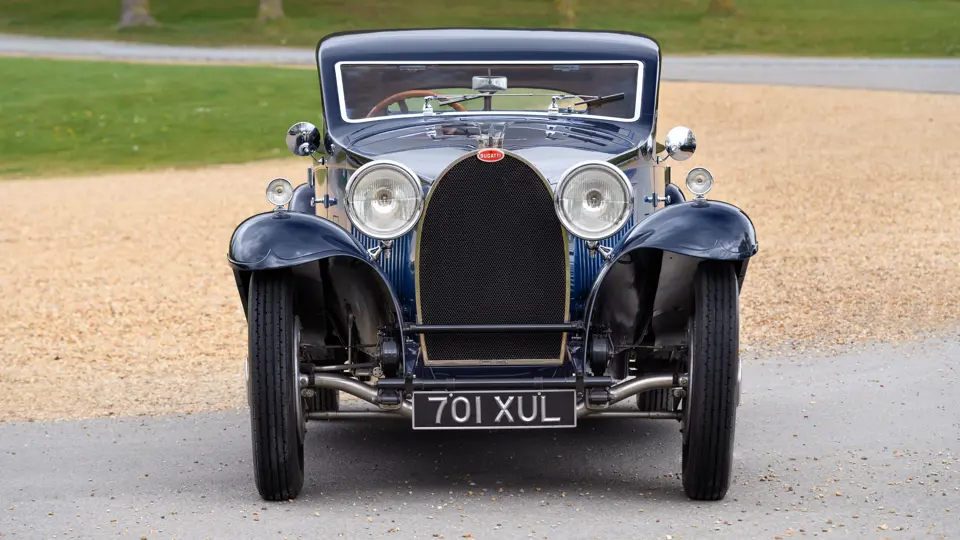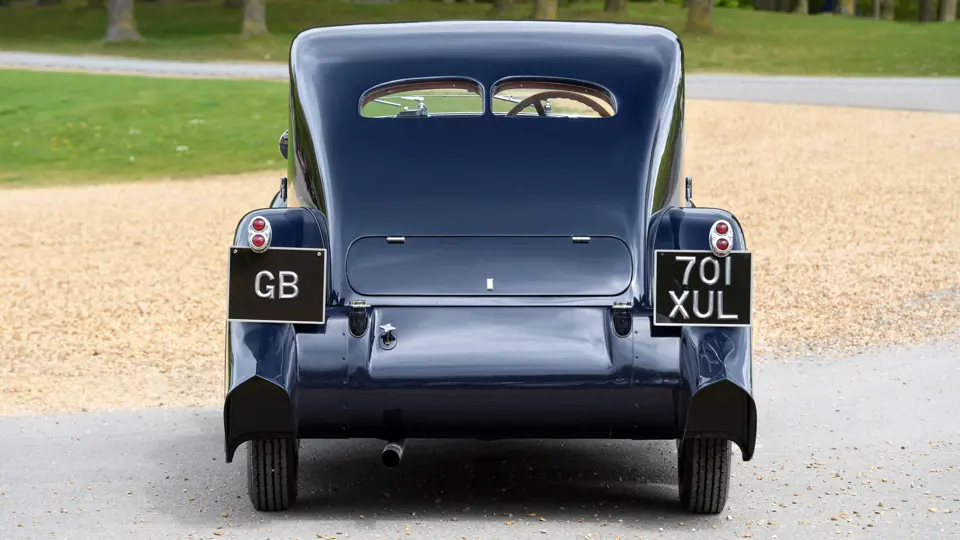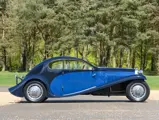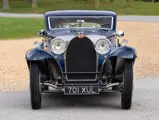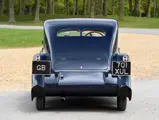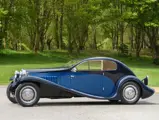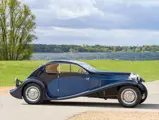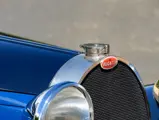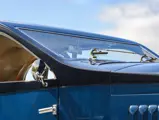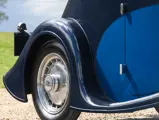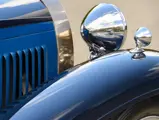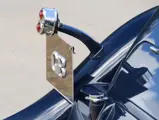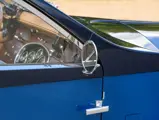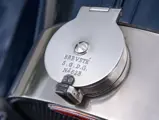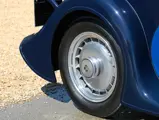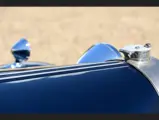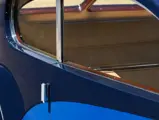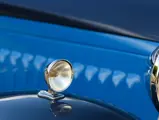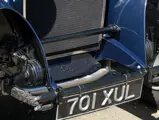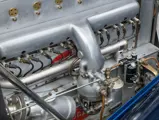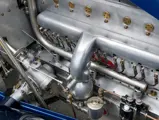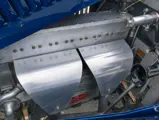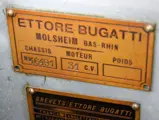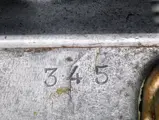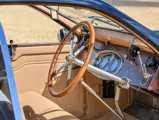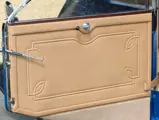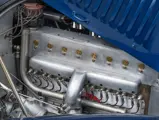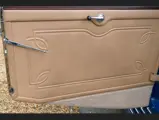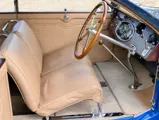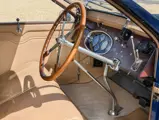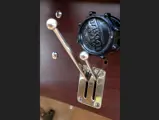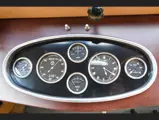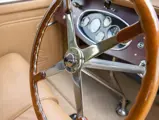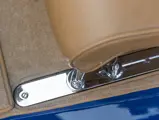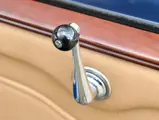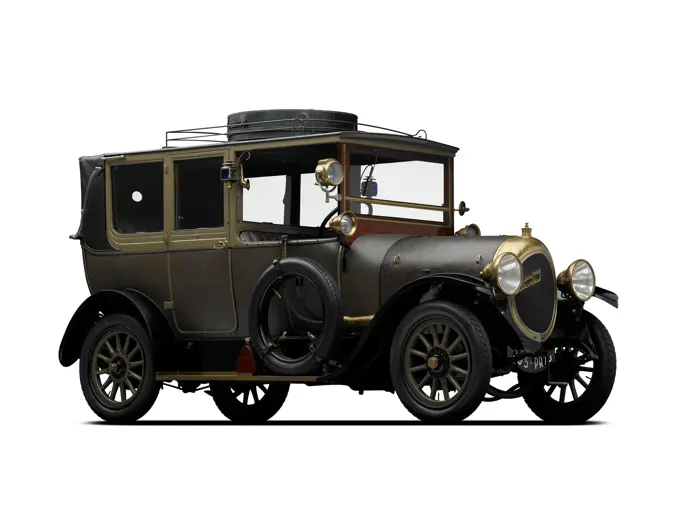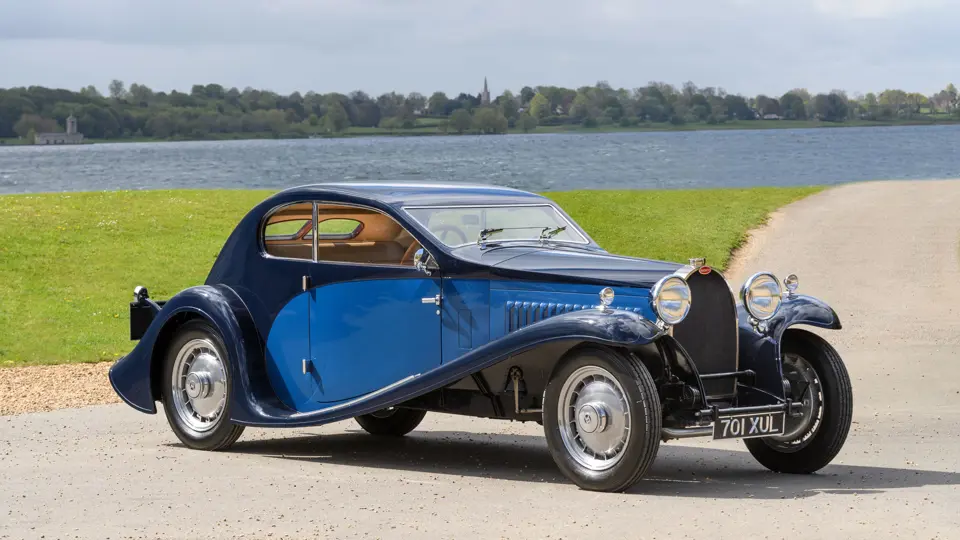
1931 Bugatti Type 46 Coupé Superprofilée in the style of Jean Bugatti
{{lr.item.text}}
€545,000 EUR | Sold
{{bidding.lot.reserveStatusFormatted}}
- An outstanding homage to one of the most recognisable Jean Bugatti designs
- One of two bare chassis purchased from Roland Bugatti by Richard Baudens in the 1950s
- Built to a very high standard by Ashton Keynes Vintage Restorations
- A grand and dramatic Bugatti tourer in the style of Gangloff
- Un eccezionale omaggio a uno dei progetti più caratteristici di Jean Bugatti
- Uno dei due telai venduti, negli anni ’50, da Roland Bugatti a Richard Baudens
- Costruita con un alto livello qualitativo dalla Ashton Keynes Vintage Restorations
- Importante ed imponente Bugatti stradale
Bugatti introduced the Type 46 at the end of 1929, and it remained in production until 1933, by which time 468 chassis had been manufactured. It was a large and imposing luxury chassis, weighing in at 1,134 kilograms and powered by a powerful 5.4-litre straight-eight engine that was more than up to the task. Abundant torque insured the kind of top gear flexibility for which Bugattis were famous.
Customers received the best of both worlds: a superior conveyance that provided supple motoring at grand touring car level, with the exceptional road manners for which the Molsheim marque had become justly famous. Small wonder then that Bugatti achieved well over 400 sales despite the car’s introduction coinciding with the Great Depression.
Some called the Type 46 “La Petite Royale” in reference to the titanic Bugatti Type 41; the moniker aptly captured the essence of this expansive chassis and the grand bodies with which it was fitted. This was reflected in an enthusiastic review in the British magazine The Motor when a Type 46 was road tested in 1930: "A really solidly built, beautifully sprung, comfortable saloon car with exceptionally rapid acceleration through its speed range; that is the 32.5hp or 5-litre Bugatti. It combines the luxury of a large limousine, the flexibility and top gear performance of a thoroughbred town carriage with the perfect road holding, the speed and acceleration of the best type of sports model.” High praise indeed.
A TRIBUTE TO THE STUNNING SUPERPROFILÉ
As it survives today, chassis 46491 presents the unique combination of a pristine Bugatti chassis paired with one of the most iconic designs created by Jean Bugatti and his assistant Joseph Walter. Remarkably, its present coachwork is the first this chassis has ever worn.
It is commonly accepted that after World War II, a number of unfinished chassis existed in various states of assembly in and around the Bugatti works. The ownership of four of these is believed to have been assigned to Roland Bugatti, son of Ettore. As documented in the bulletin of the American Bugatti Club (Pur Sang, Vol. 21, No. 3. Fall 1980), two of these chassis were discovered by Richard Baudens, a close friend of Roland Bugatti, in Roland’s garage sometime in 1952: chassis 46482 and 46491. Neither had ever been bodied or run, and both came with an unused and crated Type 46 engine.
Mr. Baudens bought both chassis and had them transported to his garage in Paris. Chassis 46482 went to America, while Mr. Baudens kept 46491 with the intention of having a body manufactured for it. But as is often the case with such well-intentioned projects, this never happened, and the still-bare chassis was acquired by Michael Glass in the United Kingdom. Mr. Glass kept it until the 1980s, when it was bought by the legendary car dealer Charles Howard, who then sold it to a collector of French automobiles in the mid-1990s.
With this aged but original chassis—still displaying unmarked paint and body mounting pads—serving as the starting point, a 10-year restoration commenced; first in the shop of the famous Bugatti author Barrie Price, and later transferred to the premises of the distinguished Ashton Keynes Vintage Restorations, operated by Keith Bowley.
The inspiration for chassis 46491’s coachwork was well-chosen: A Gangloff-bodied Type 50 coupé of astounding proportions. The star of the Bugatti stand at the 1932 Paris Salon, its resplendent black and blue colour scheme and flowing lines were accentuated by a contrasting sweep panel inspired by the Le Baron phaeton designs first seen on the Duesenberg Model J in 1929. Subsequently called the “Superprofilée,” this stunning design featured a steeply raked windshield, an elegant fastback rear and flowing front fenders that swept back in an unbroken line to include the running board, before connecting with an elegant upsweep to the skirted rear fender. For once, breathtaking was no exaggeration.
The Type 46 and Type 50 chassis share their wheelbase and other basic dimensions; in fact, the period Superprofilée body found in the Cité de l'Automobile, Collection Schlumpf in France is itself presently mounted on a Type 46 chassis. Small wonder then, that this spectacular design statement was chosen to be replicated on chassis 46491. The result is a car of sublime symmetry and startling modernity, especially considering that its lines are nearly 90 years old!
Presented in wonderfully maintained condition, chassis 46491 presents a unique opportunity to acquire an irresistible homage to this striking design—an exquisitely crafted motorcar of which Jean Bugatti himself would no doubt approve.
Bugatti introdusse la Tipo 46 alla fine del 1929 ed il modello è rimasto in produzione fino al 1933, quando erano stati realizzati 468 autotelai. Era un grande e imponente autotelaio di lusso, dal peso di 1.134 chilogrammi e mosso da un potente motore otto cilindri in linea da 5,4 litri che era più che all'altezza del compito che doveva svolgere. La coppia abbondante assicurava che il tipo di elasticità di marcia permessa nel rapporto superiore, fosse all’altezza delle aspettative per cui le Bugatti erano famose.
I clienti ricevevano il meglio possibile sotto ogni aspetto: una vettura granturismo di livello superiore capace di garantire un viaggio confortevole, abbinato alle straordinarie caratteristiche stradali che avevano, giustamente, reso famosa la casa di Molsheim. Non c'è da stupirsi quindi che, malgrado il modello sia stato commercializzato proprio all’inizio della grande depressione del ’29, Bugatti abbia venduto 400 vetture.
Alcuni chiamavano la Tipo 46 "La Petite Royale", riferendosi alla gigantesca Bugatti Tipo 41; un soprannome che, catturava perfettamente lo spirito di questo telaio di grandi dimensioni e delle imponenti carrozzerie con cui veniva carrozzato. La Tipo 46, oggetto di una prova su strada della rivista inglese The Motor nel 1930, ha generato un'entusiasta recensione: "Una confortevole berlina estremamente ben costruita e ben molleggiata, capace di un'accelerazione eccezionalmente rapida a qualsiasi velocità; questo è il motore Bugatti 32,5 Cv (di potenza fiscale) da 5 litri. E’ un auto capace di combinare il lusso di una grande limousine, la flessibilità e l’elasticità di marcia nel rapporto superiore delle migliori vetture da città, con la perfetta tenuta di strada, la velocità e l'accelerazione della migliore vettura sportiva." Gran bella lode davvero.
UN TRIBUTO ALLA STRAODINARIA SUPERPROFILÉ
Nelle condizioni attuali, la vettura con telaio 46491 presenta la combinazione unica di un telaio Bugatti originale, abbinato ad uno dei disegni di carrozzeria più iconici creati da Jean Bugatti e dal suo assistente Joseph Walter. Sorprendentemente, la sua attuale carrozzeria è la prima che questo telaio ha mai ricevuto.
È comunemente riconosciuto che, dopo la seconda guerra mondiale, un certo numero di telai non finiti fosse presente, in vari stati di assemblaggio, dentro e intorno agli stabilimenti Bugatti. Si ritiene anche che, la proprietà di quattro di questi telai sia stata assegnata a Roland Bugatti, figlio di Ettore. Come documentato nel bollettino dell'American Bugatti Club (Pur Sang, Vol. 21, nr. 3. Autunno 1980), due di questi telai (46482 e 46491) sono stati poi scoperti nel 1952, nel garage di Roland Bugatti, da Richard Baudens, un caro amico di Roland stesso. Nessuno dei due telai era mai stato carrozzato o utilizzato e, entrambi, vennero venduti accompagnati da un motore Tipo 46 ancora nuovo, imballato nella sua cassa.
Il signor Baudens ha acquistato entrambi i telai e li ha fatti trasportare nel suo garage di Parigi. Il telaio 46482 è andato in America, mentre il signor Baudens ha tenuto il telaio 46491 con l'intenzione di far realizzare una carrozzeria a lui dedicata. Ma, come spesso accade con progetti così ricchi di buone intenzioni, ciò non è mai accaduto e il telaio, ancora senza carrozzeria, è stato acquistato, nel Regno Unito, da Michael Glass. Il signor Glass l'ha conservato fino agli anni '80, quando è stato acquistato dal leggendario concessionario di automobili Charles Howard, che, in seguito, lo cedette, a metà degli anni ’90, vendendolo ad un collezionista di automobili francesi.
Ed è questo il telaio, invecchiato ma completamente originale, che mostra ancora la sua vernice non segnata ed i cuscinetti per il montaggio della carrozzeria ancora nuovi, che funge da punto di partenza per il restauro che si protrarrà per ben 10 anni; prima nell’officina del famoso autore di libri Bugatti, Sig. Barrie Price e, successivamente, nei locali dell'illustre Ashton Keynes Vintage Restorations, gestito da Keith Bowley.
L'ispirazione per la carrozzeria da montare sul telaio 46491 è stata attentamente scelta: una coupé Tipo 50, con carrozzeria Gangloff, dalle proporzioni straordinarie. La stella dello stand Bugatti al Salone di Parigi del 1932, nel suo splendente schema cromatico nero e blu, nel quale le linee morbide sono state accentuate dalla decorazione cromatica bicolore a fare da contrasto, ispirato ai disegni delle carrozzerie Phaeton di Le Baron, viste per la prima volta sul modello Duesenberg J del 1929. Successivamente chiamato "Superprofilée", questo splendido design presentava un parabrezza fortemente inclinato, un elegante posteriore di tipo fastback e parafanghi anteriori allungati che si aprivano, in una linea ininterrotta, per includere il predellino, prima di connettersi con un elegante parte verticale, al ricercato parafango posteriore. Per una volta, dire mozzafiato” non è un'esagerazione.
I telai Tipo 46 e Tipo 50 condividono il passo e le altre dimensioni di base; infatti, la carrozzeria Superprofilée d'epoca rinvenuta nella Cité de l'Automobile, Musée National de l'Automobile, Collection Schlumpf in Francia è, essa stessa, attualmente montata su un telaio Tipo 46. Non sorprende quindi che questa spettacolare opera di design sia stata scelta per essere replicata sul telaio 46491. Il risultato è un'auto di sublime simmetria e sorprendente modernità, soprattutto considerando che le sue linee hanno quasi 90 anni!
Offerta in condizioni di meravigliosa conservazione, la vettura con telaio 46491 offre un'opportunità unica di acquistare un irresistibile omaggio a questo straordinario design: una vettura squisitamente realizzata che sarebbe, senza dubbio, approvata dallo stesso Jean Bugatti.

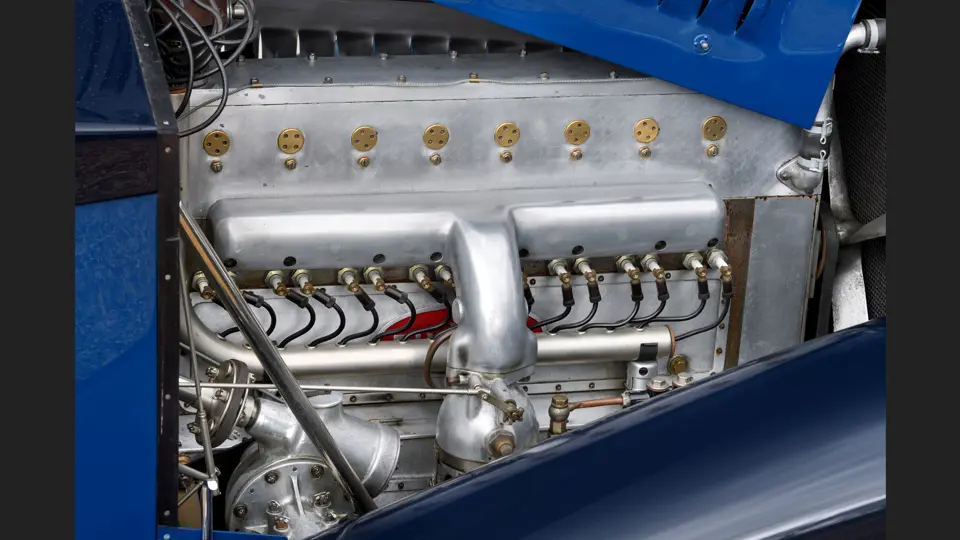
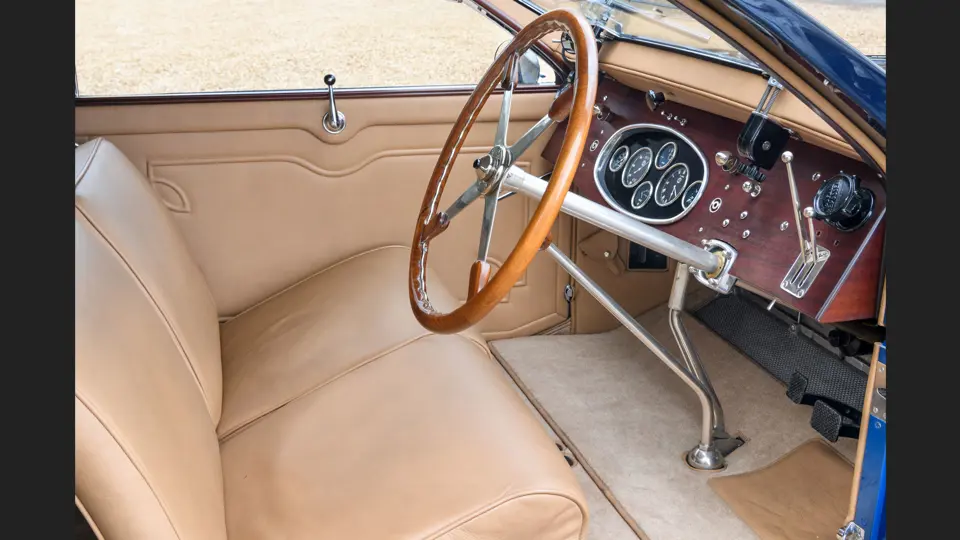

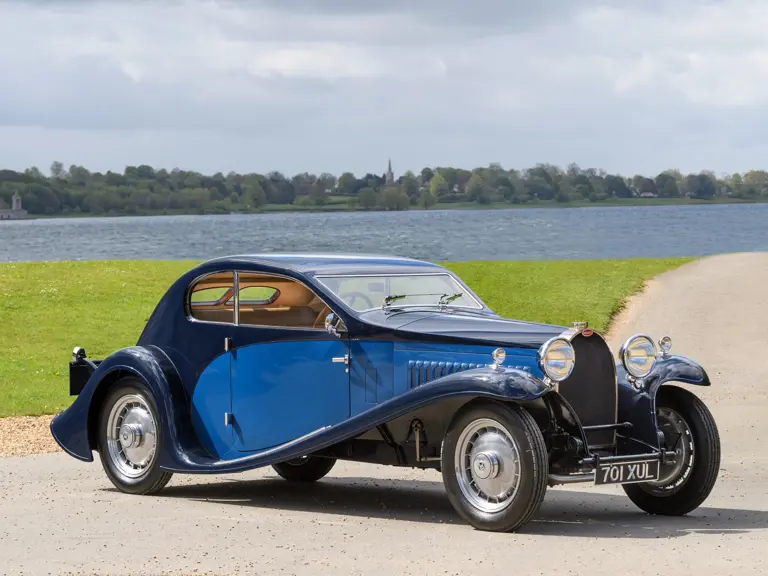
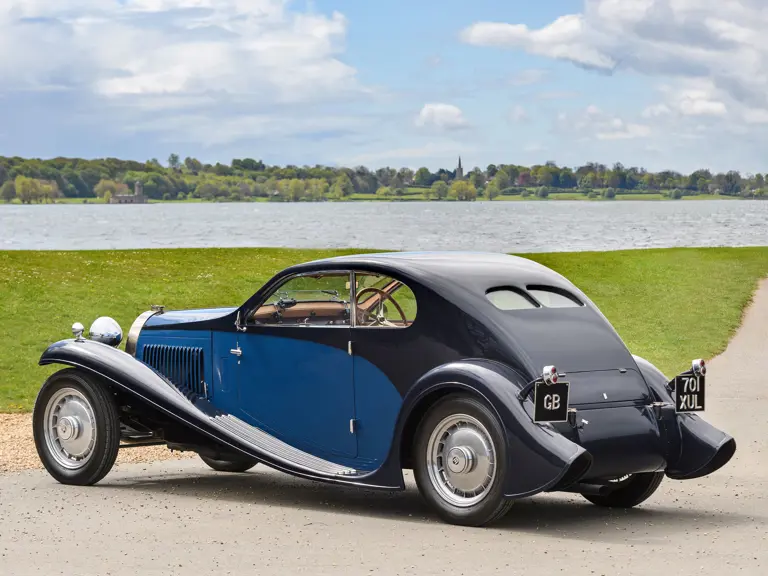

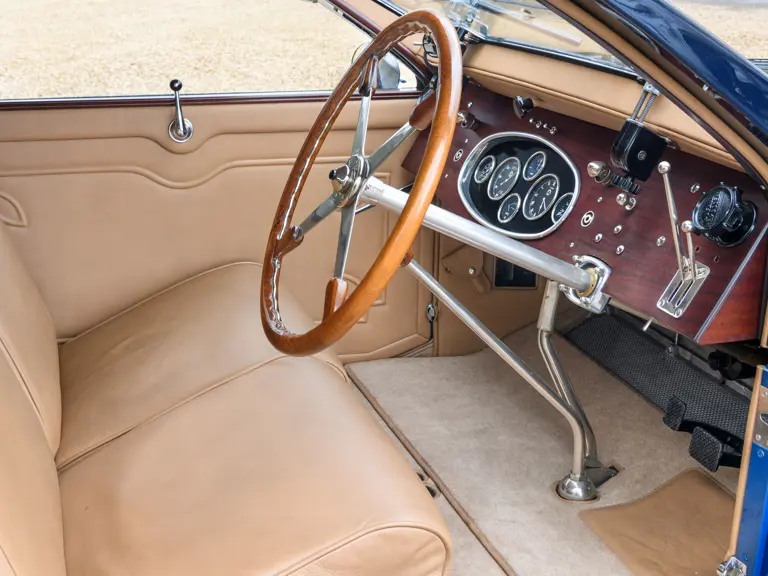

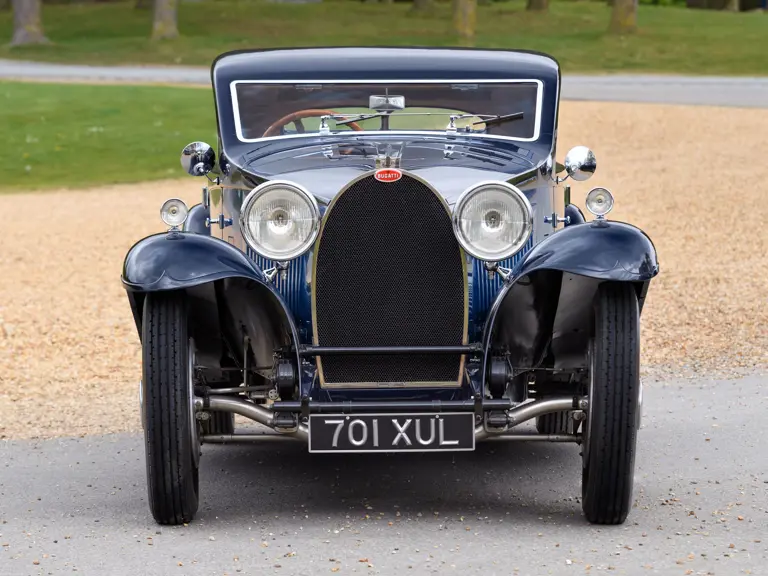
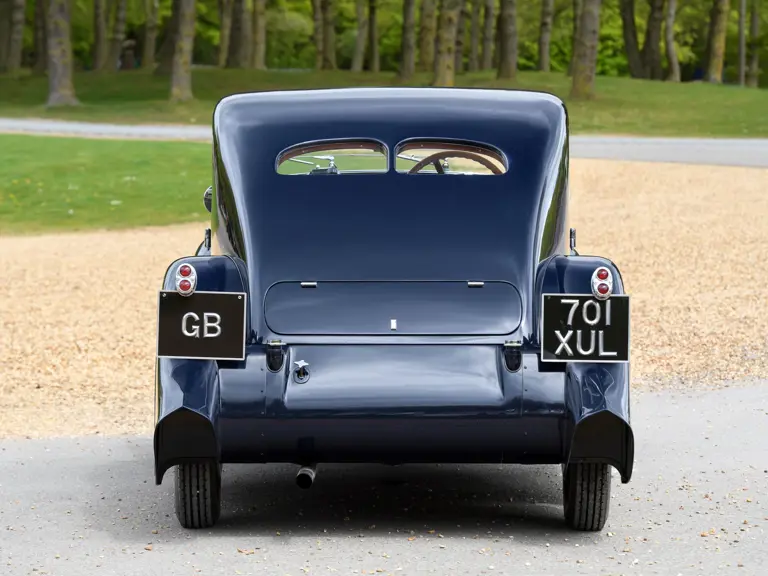

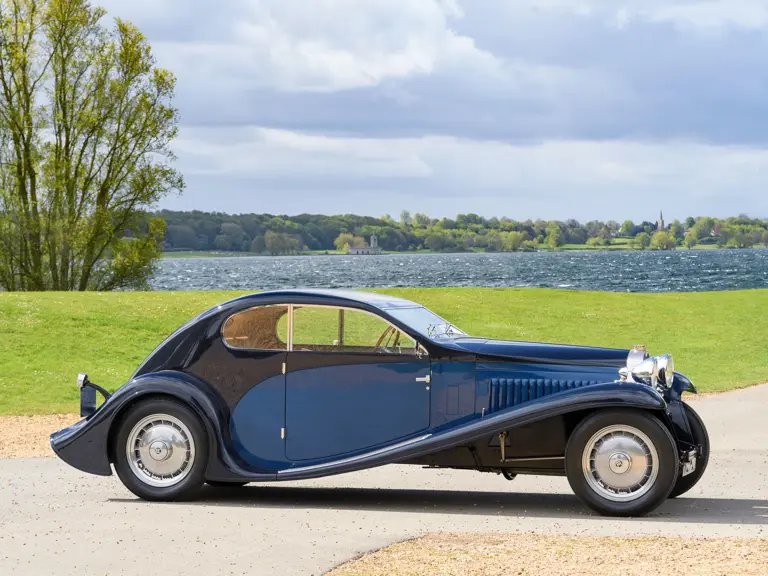

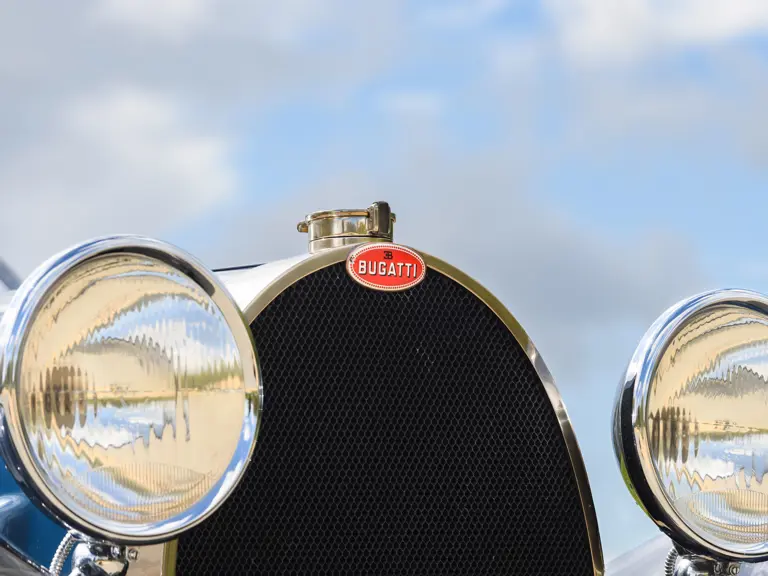
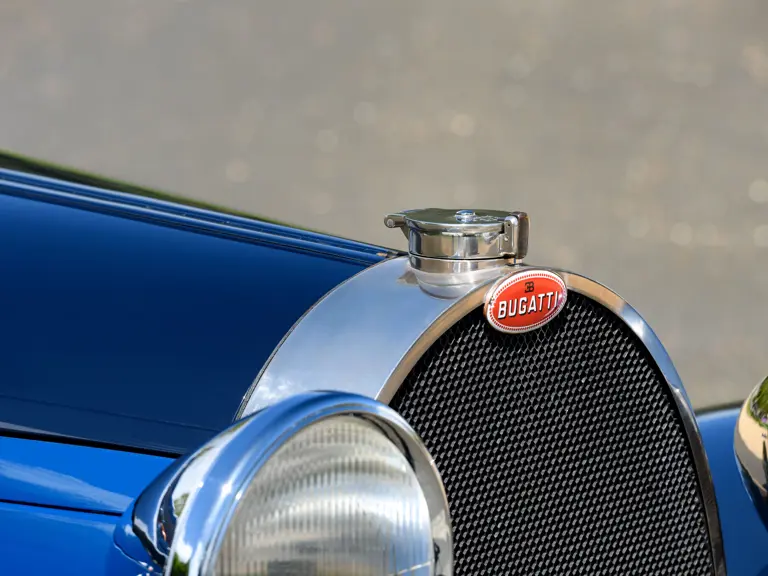

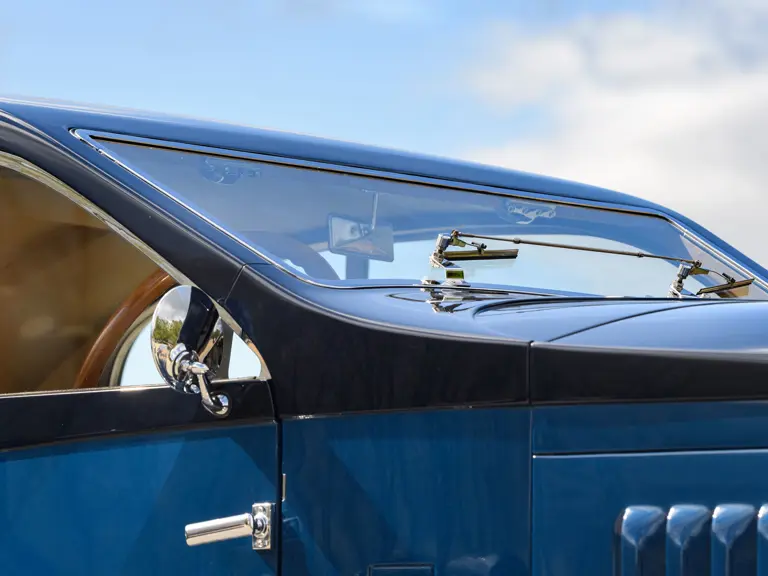
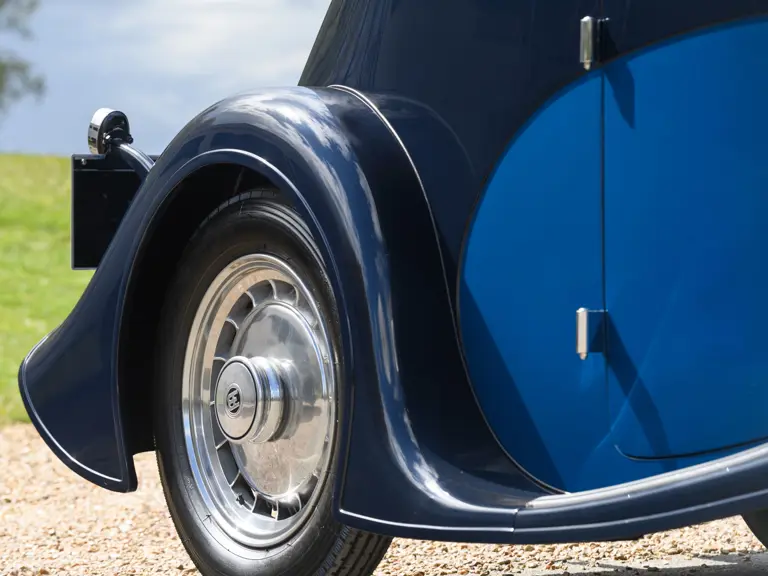
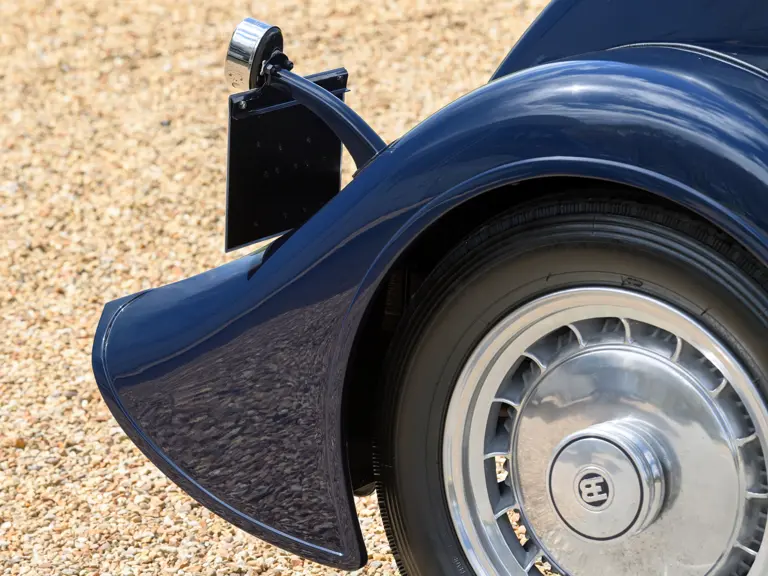
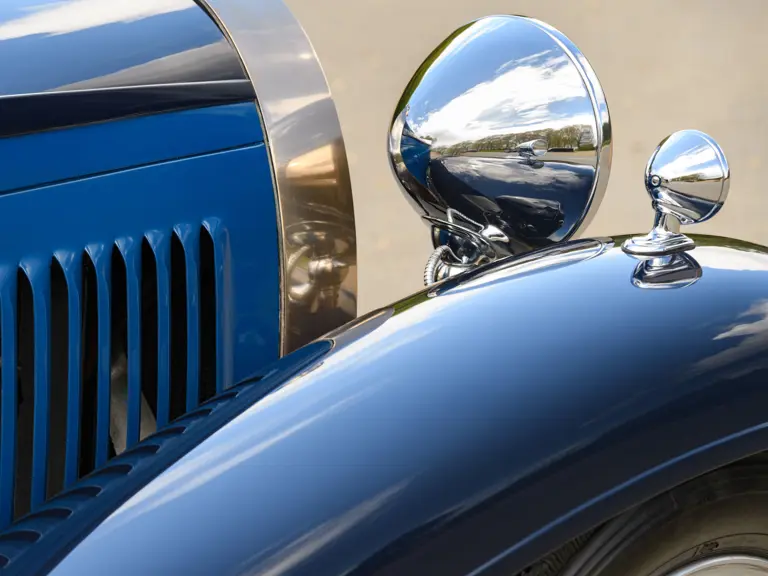
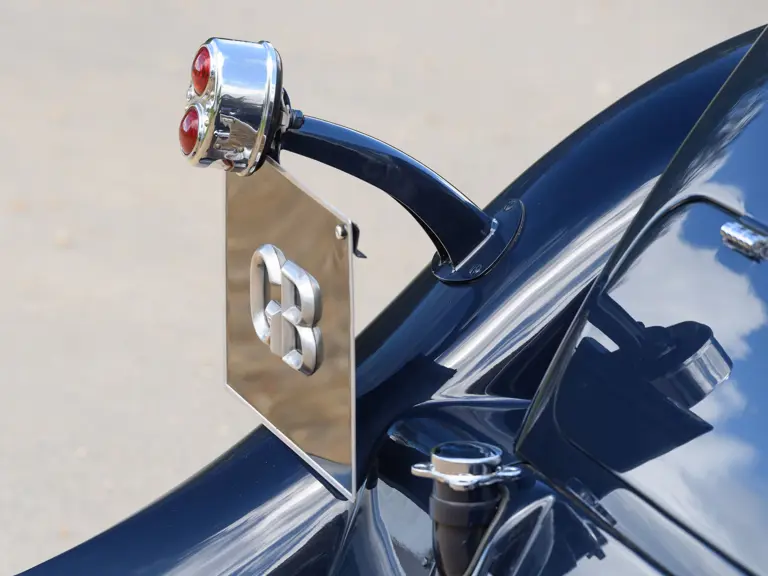
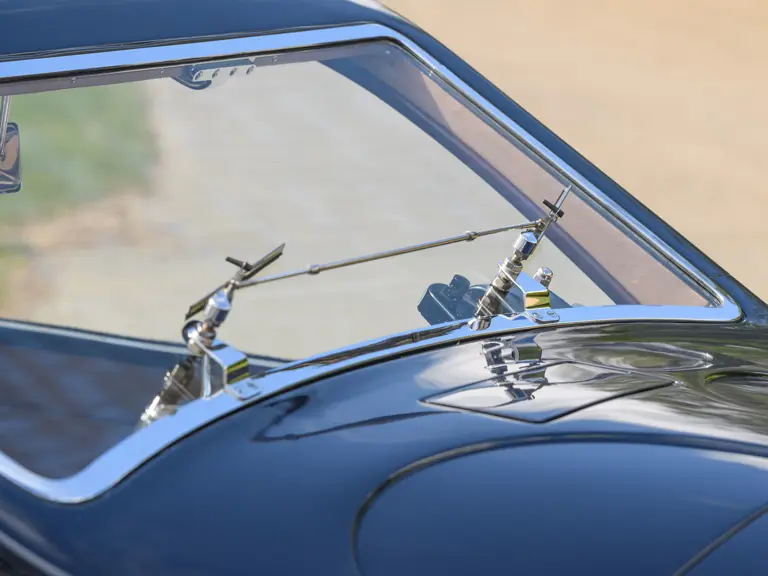
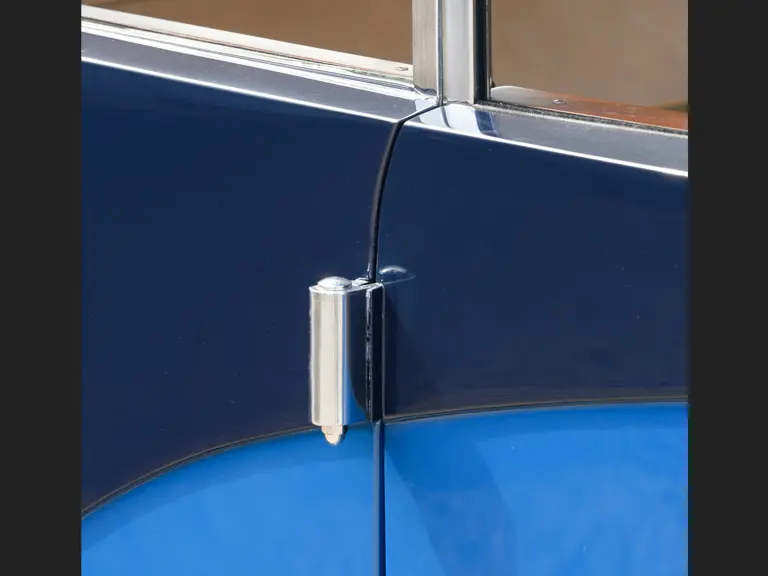
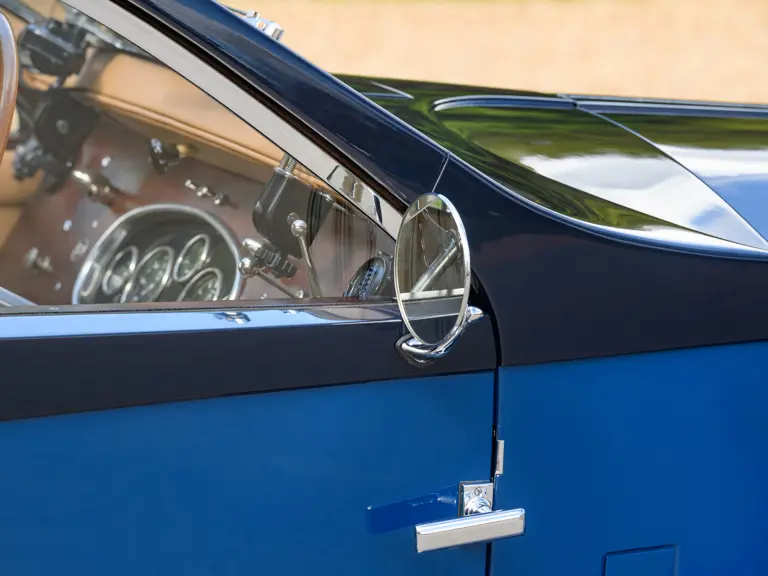
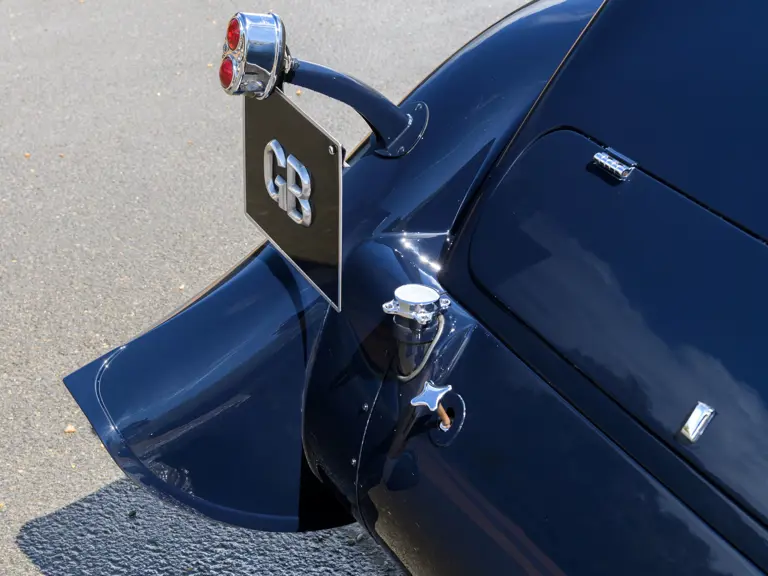
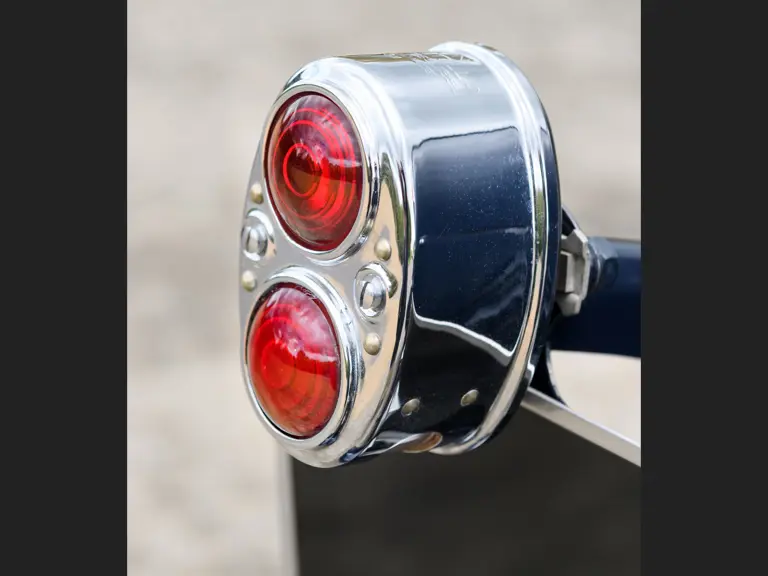
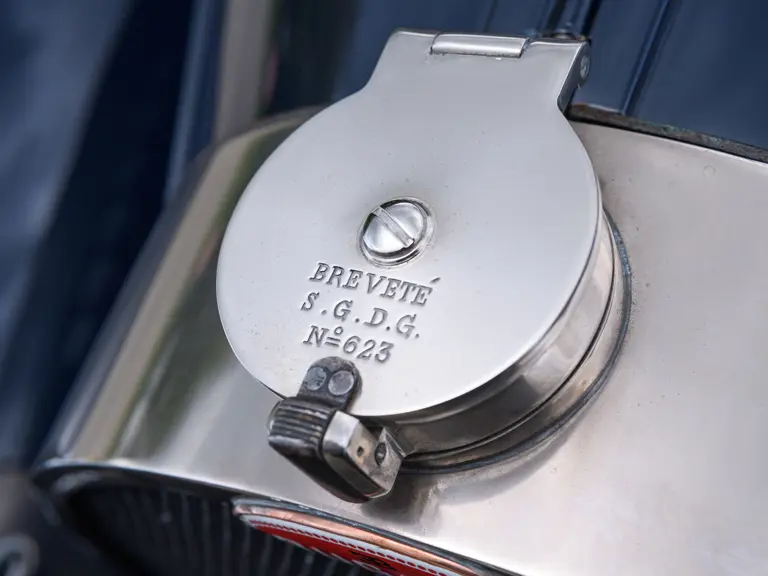
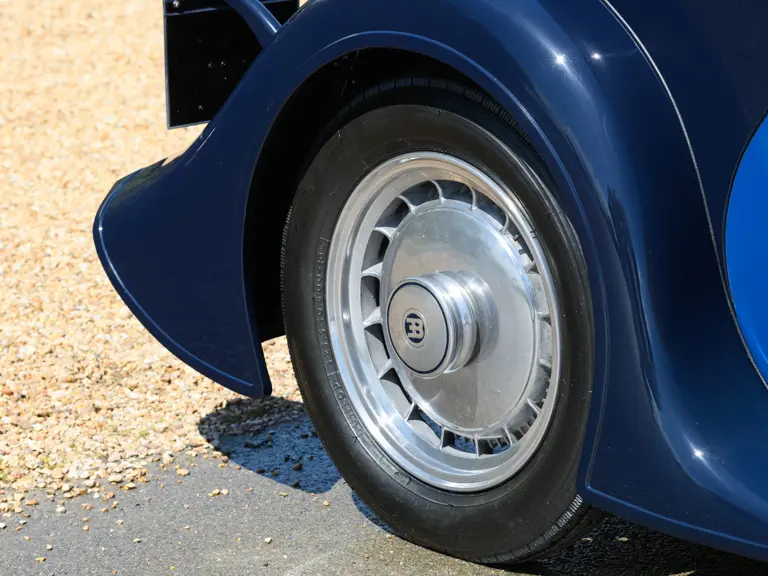
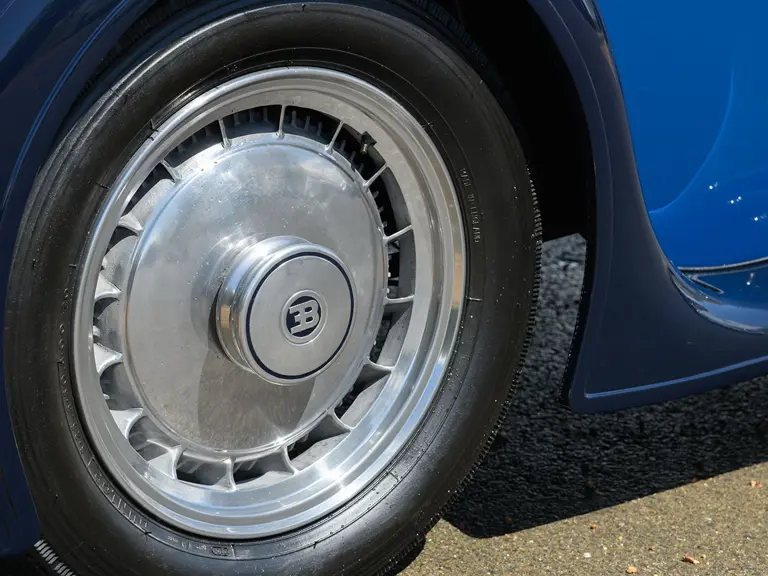
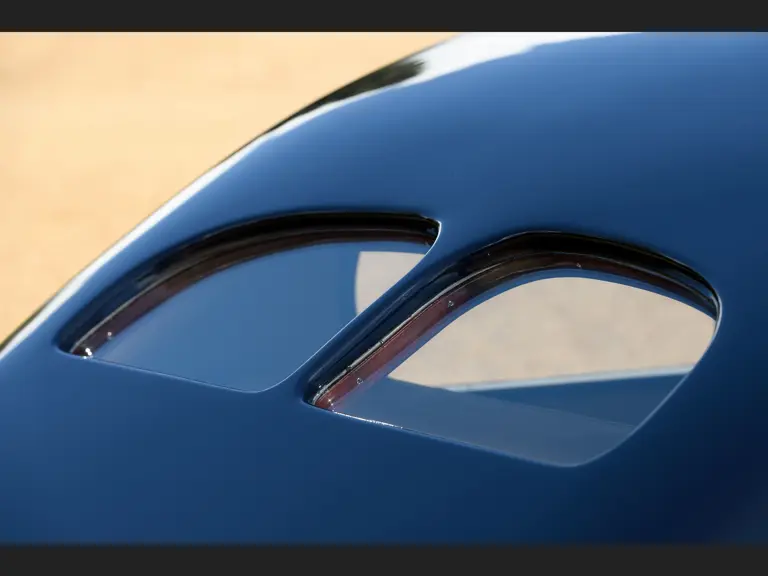
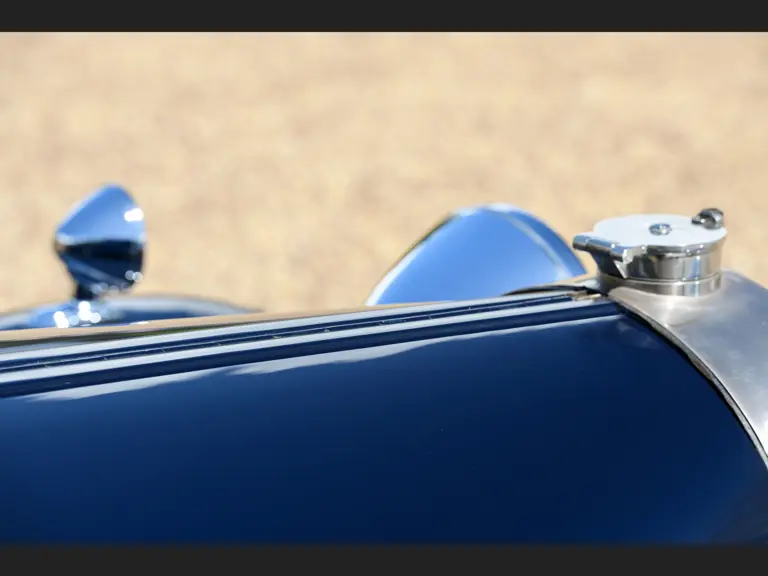
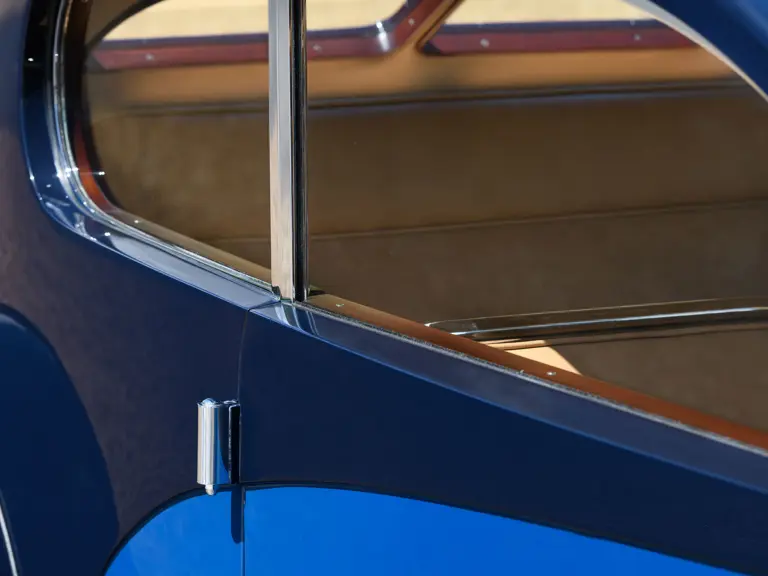


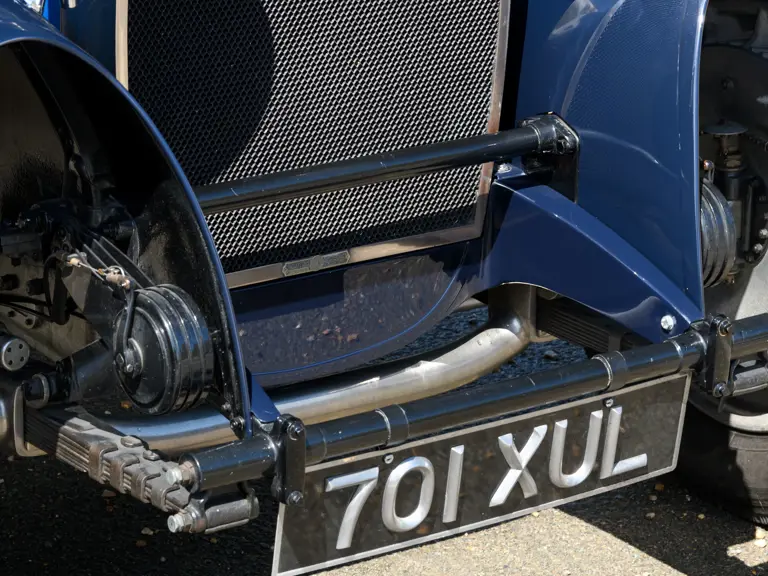
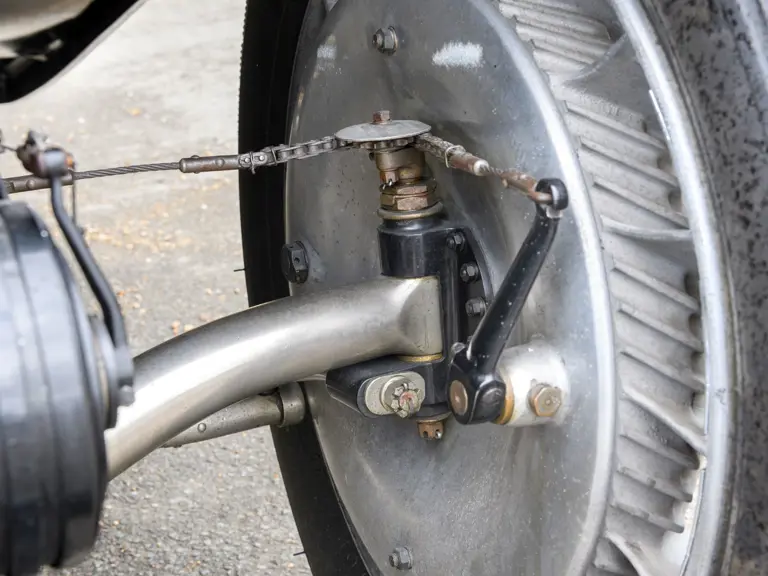
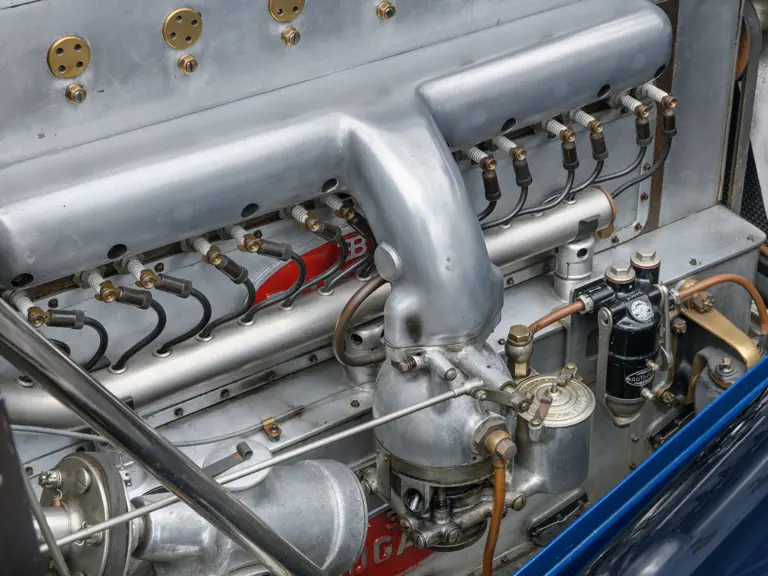
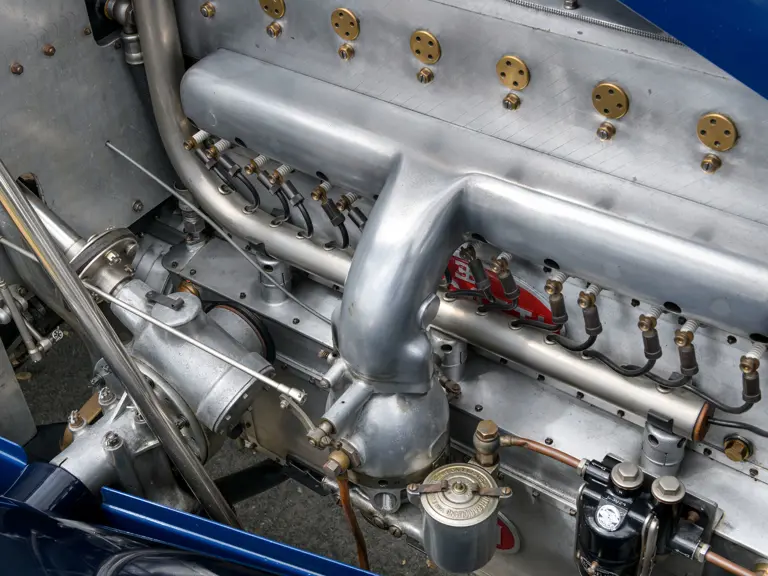



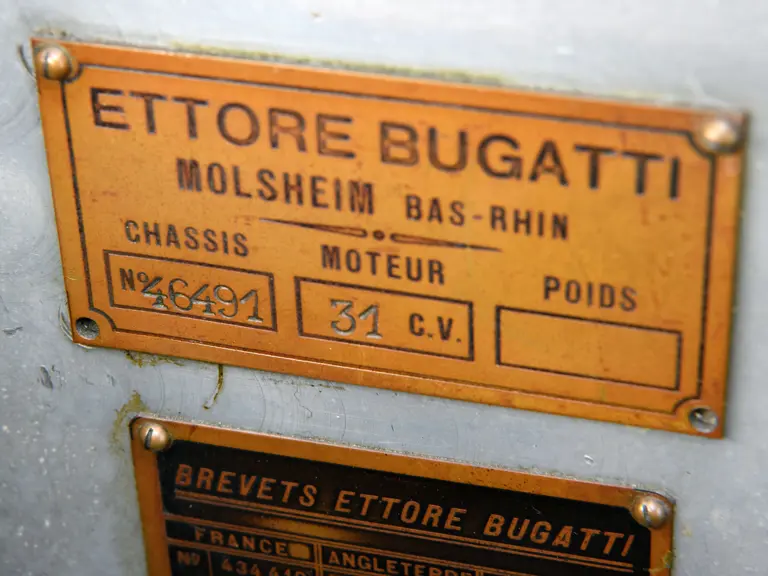
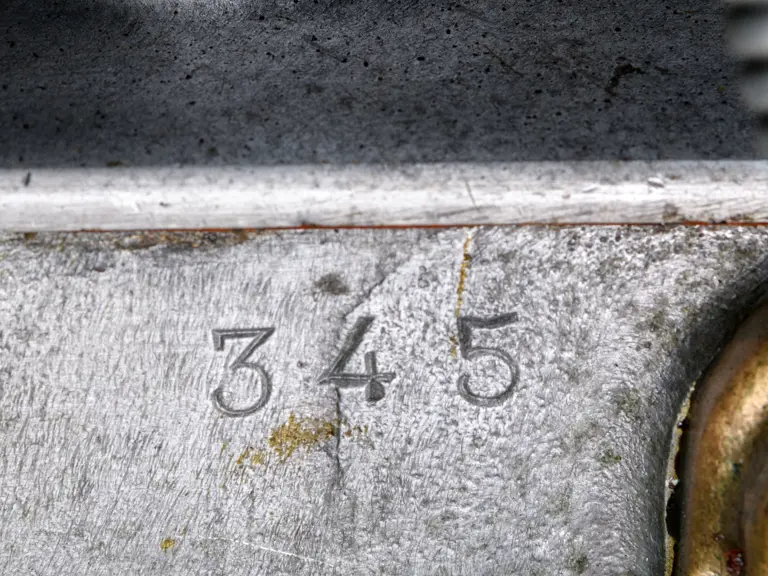
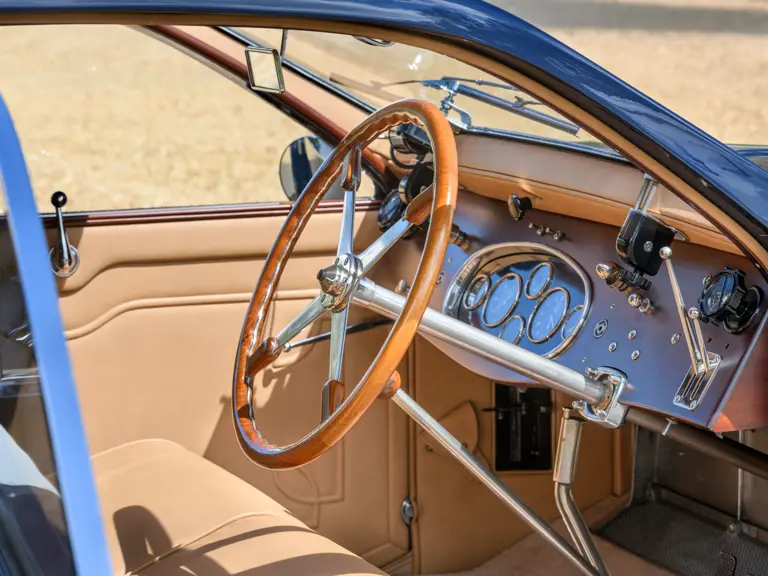
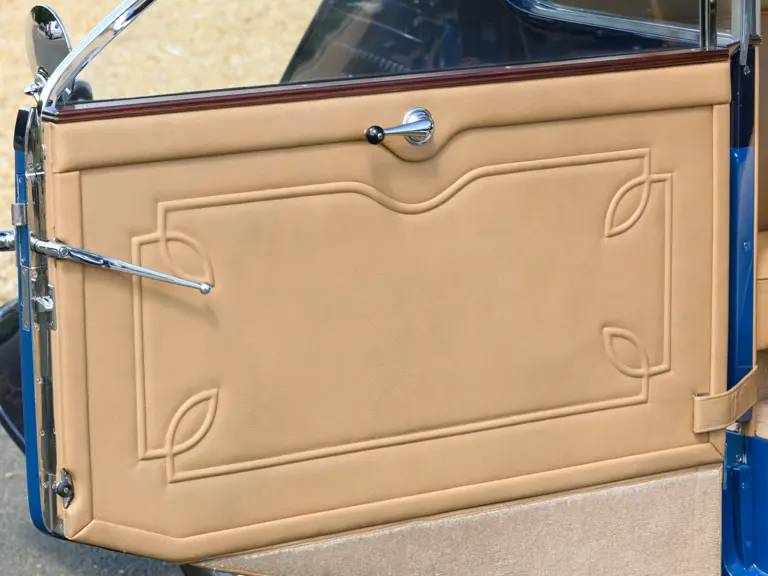

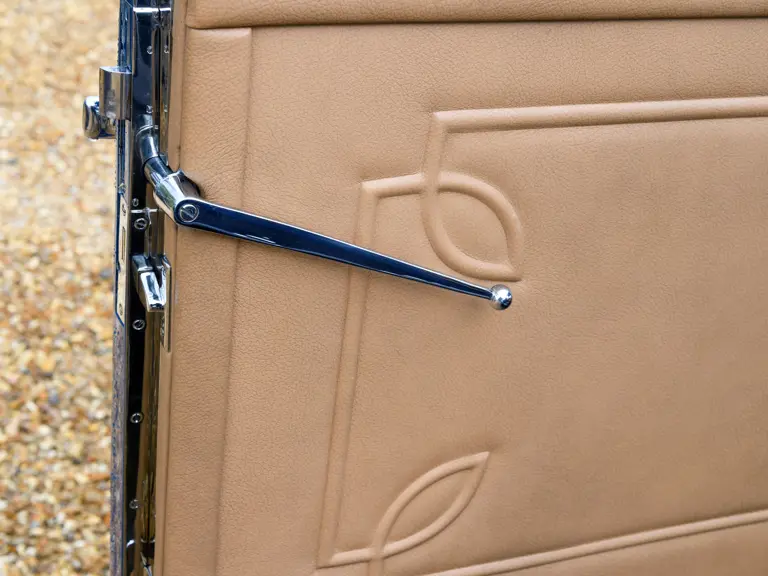
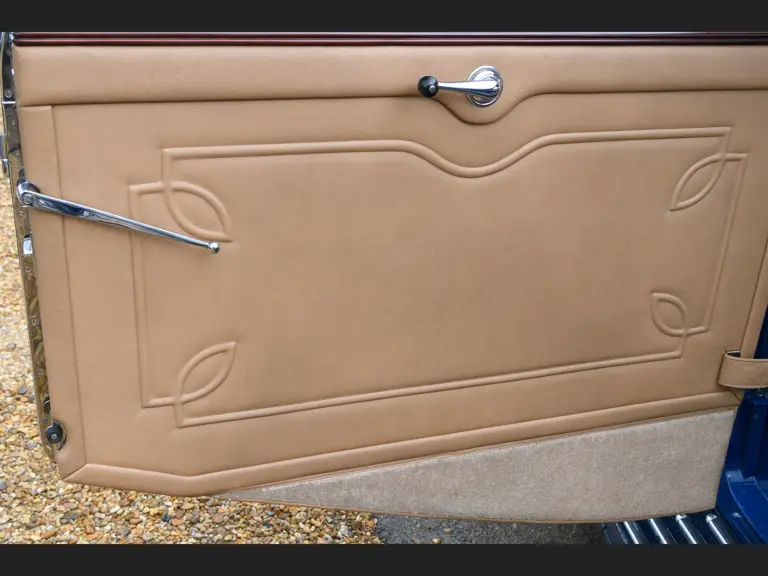

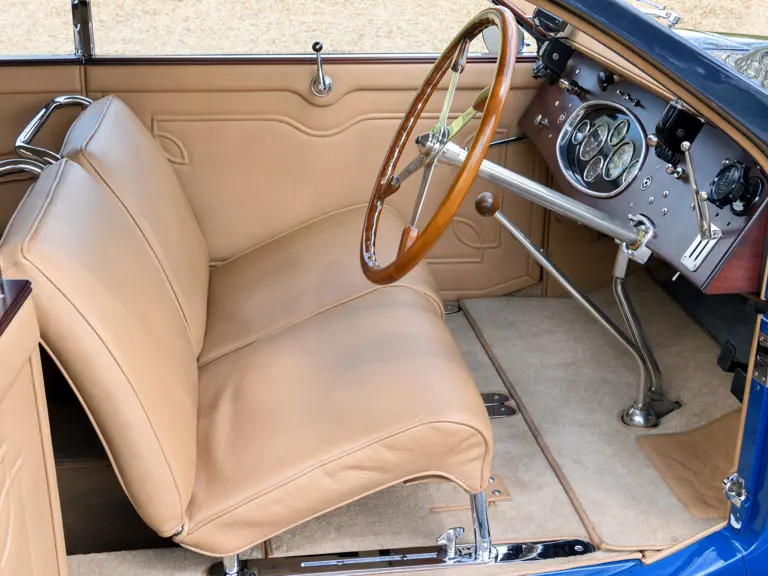
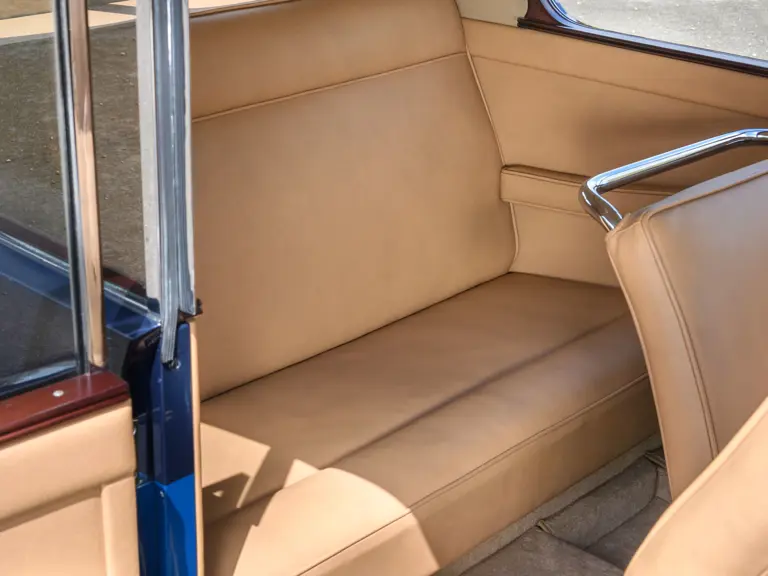
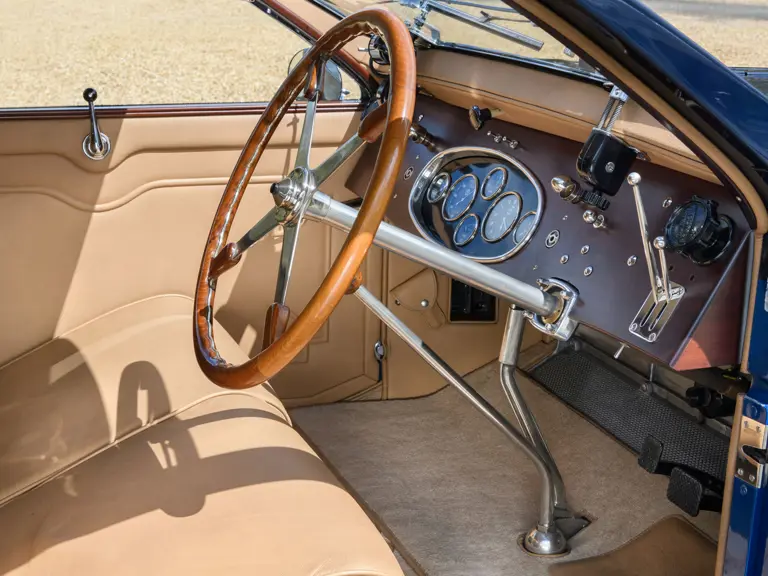
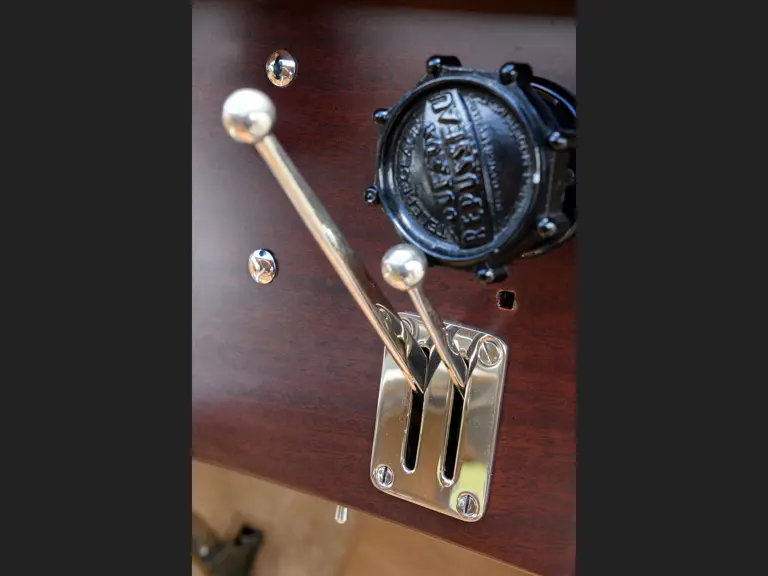

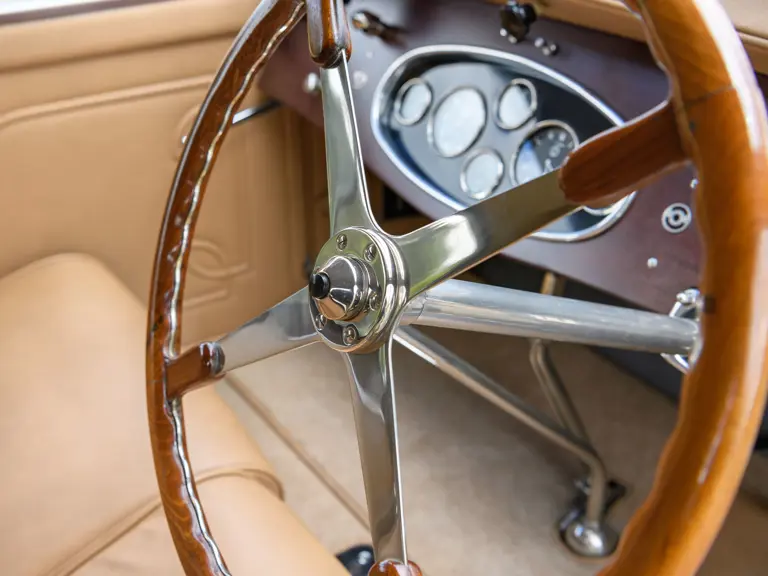
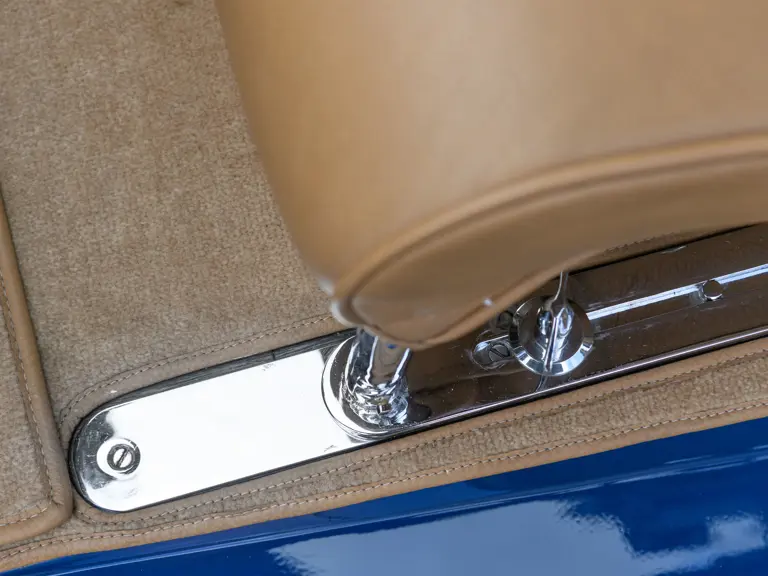
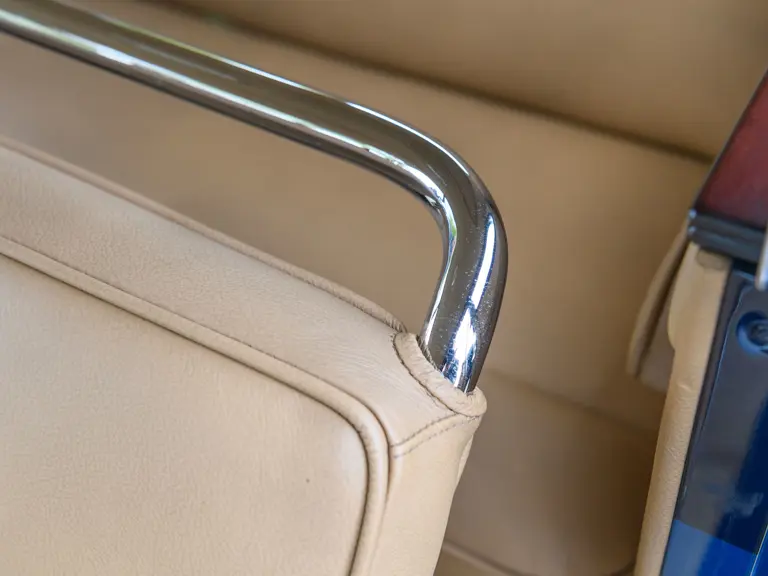

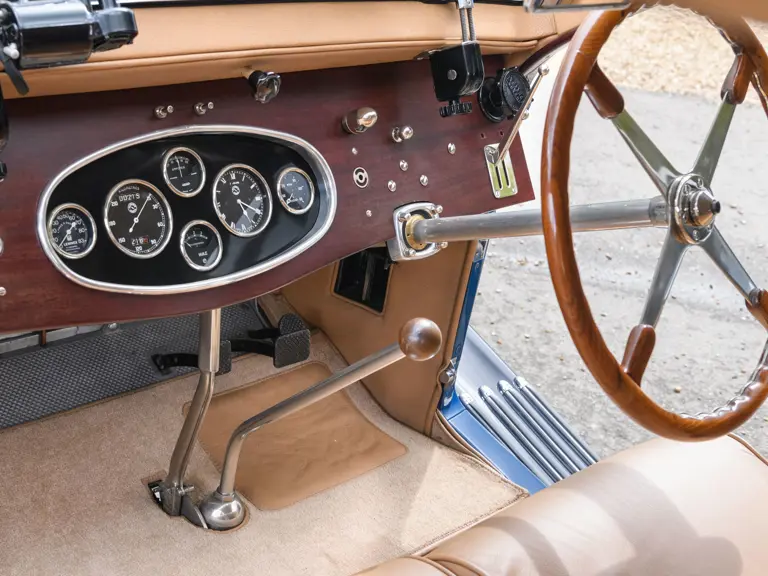
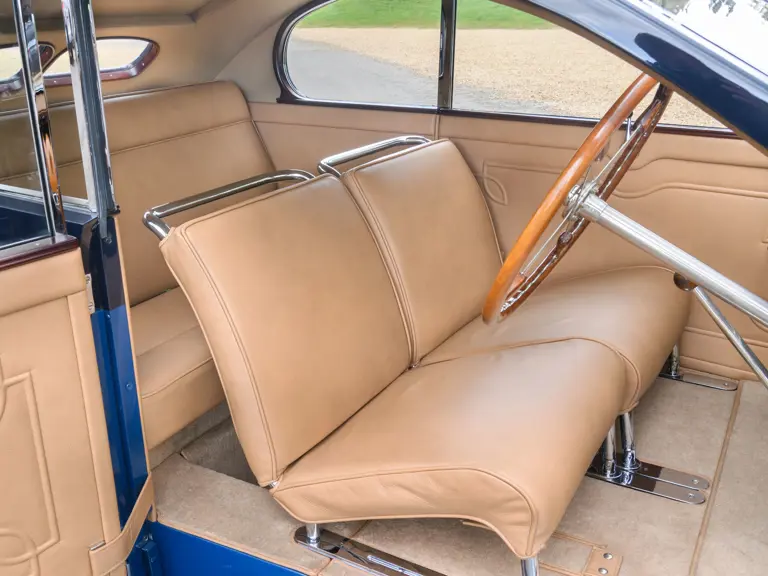
 | Milano, Italy
| Milano, Italy

